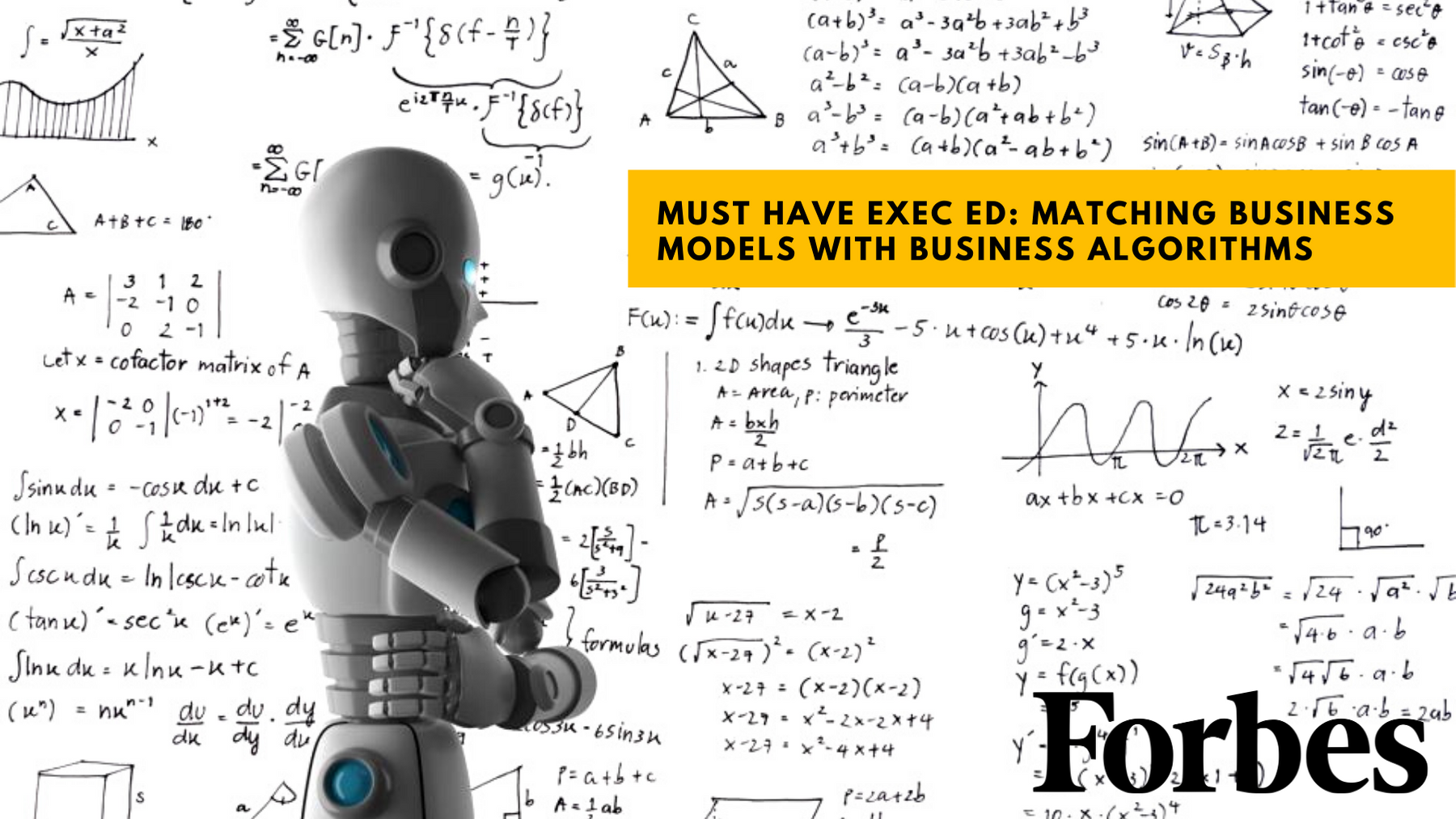
There’s a gap in our understanding of the relationship between digital business models – which are pervasive – and the quasi- and fully-automated algorithmic-based solutions available to business problem-solvers. The challenge was recently described in a recent Harvard Business Review article by Mike Walsh with the timely title, “Why Business Leaders Need to Understand Their Algorithms.”
Others – like Tauscher, Mahar, Bain, Ismail, van Rijmenam, Mueller and Massaron, Pettey and Ban, among many others – have explored digital business models and business algorithms in detail, but the marriage of the two – which is the sweet spot – seldom occurs. There are also some excellent Exec Ed programs that address machine learning and artificial intelligence, but they seldom — if ever — foster a marriage between the features of business models and algorithmic optimizers. The idea here is Exec Ed that describes digital business models and business algorithms and then matches business model features with algorithmic capabilities.
Marital Problems
Very few executives understand the full range of digital business models or how the models work. Few understand the range of enabling algorithms or how they work. They therefore cannot match the right algorithm to the right business process or model that needs to be improved, modified, automated or replaced. Nor can we easily discuss the strengths and weaknesses of classes of algorithms or specific algorithms which are mysterious to most executives. The stakes are high: the success of digital transformation depends almost completely upon successful business model/business algorithm matching – upon a solid marriage between models and algorithms.
Matchmaking
Three steps are necessary to arrange a marriage:
Step 1: Identify and explain existing and emerging digital business models and how they work:
There are classes of business models that industries are adopting. They have characteristics that executives should understand — even as their companies deploy them. Step 1 will identify and describe the models, including their trajectories. Figure 1 presents a high level look at a cross-section of digital business models. Most executives are relatively unfamiliar with the range of digital business models (and processes) that drive Industry 4.0. FourWeekMBA beautifully summarizes the most popular digital business models in Figure 1. In fact, FourWeekMBA presents one of the best executive briefings on digital business models (and other “MBA” facts) I’ve seen.
Step 2: Identify and explain the range of business algorithms that enable digital business models and processes:
There are algorithms embedded in applications and platforms that enable, improve, automate and replace business processes and whole business models. Many of them appear in Figure 2. Note that we cannot expect executives to fully understand all of the algorithms in Figure 2, or the underlying mathematics that powers them. But we can expect them to understand classes of algorithms and generally how they work (defined by the data they require, the way data is processed and analyzed, and the kind of results they generate).
GeeksforGeeks presents a list of business algorithms. Note the number of algorithms and whole classes of algorithms in Figure 2. Executives should understand what the classes do, how they work, the problems to which they’re best suited and the results they produce.
Step 3: Identify and explain the relationships across digital business models and algorithmic solutions:
This is the key step. Building on Steps 1 and 2, this Step will present problem scenarios to executives and their direct reports (comprised of expected outcomes, data, processing, etc.) and “exercise” the selection of algorithms. The course will not expect executives to perform perfect matches, but it will instruct them how to think about the strengths and weaknesses of algorithmic classes and the (business model) problem characteristics that best work together.
Happily Ever After
The proposed Exec Ed will help executives in many ways. As new methods, tools and techniques make their way onto the business stage, as business becomes increasingly automated, and as competitive advantage is defined around algorithmic competency, executives need to know how this important business problem-solving toolbox works, and which tools are the most powerful and best suited to their business models and processes. It’s essential that executives understand the potential of machine learning/automation along with all related solutions. It’s a new world with new business models, new business processes and whole new algorithmic solutions that optimize business models and processes. The trick is to know which ones to use to solve specific problems. As machine learning and automation explode, executives and their teams need to understand as much as they can about digital business models and the business algorithms that enable and improve them. There’s no better – or more valuable – Exec Ed they can pursue.
This article originally appeared in Forbes.

